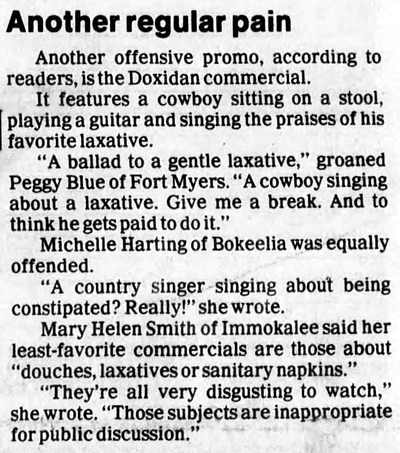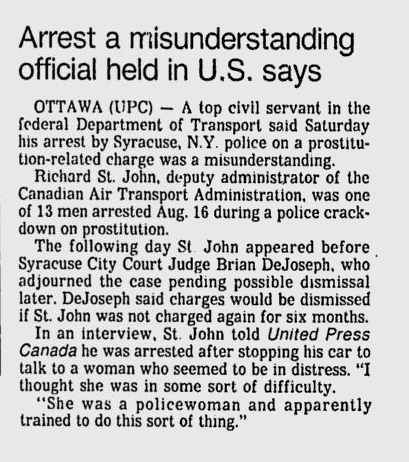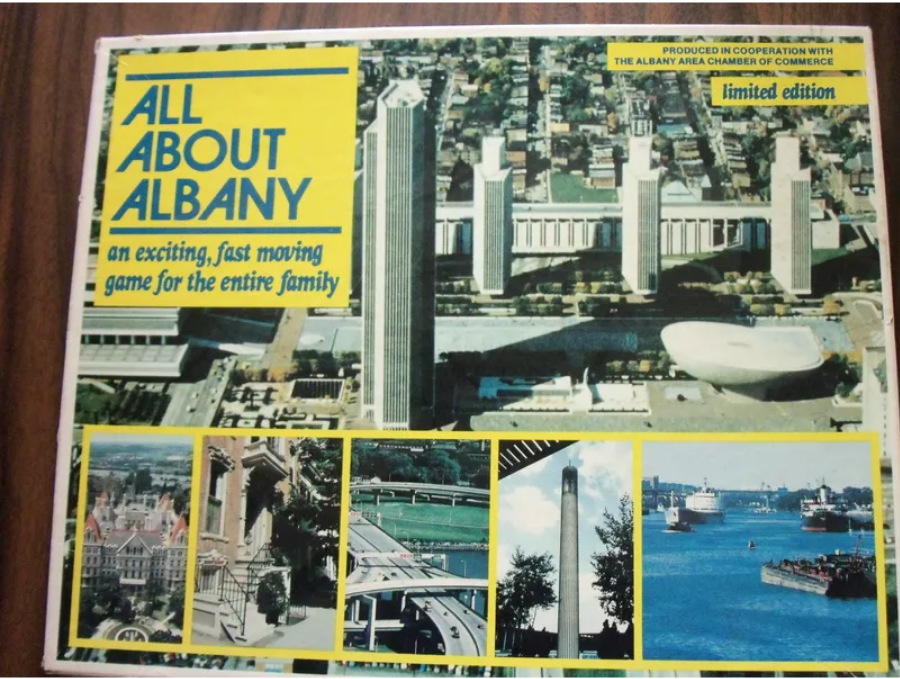1980s
Myrtle Young, the Potato Chip Lady
Myrtle Young worked as a potato chip inspector at the Seyfert Potato Chip plant in Fort Wayne, Indiana. During the course of her job, she would occasionally notice potato chips that resembled something, such as an animal or a celebrity. She began to take these chips home to show her granddaughter, and soon she had amassed quite a collection.When the media became aware of her collection it led to numerous appearances on talk shows, including a 1987 appearance on the Tonight Show with Johnny Carson. TV Guide named this as the funniest moment ever on television.
I don't know if it's the funniest ever, but it's definitely amusing. The noteworthy part occurs about a minute in.
The scene was later parodied in a 1993 episode of the Simpson's, 'Selma's Choice,' in which Great Aunt Gladys bequeathes to Marge, via video will, her collection of potato chips that look like celebrities. As the video will is playing, Homer is seen eating the chips. Unfortunately I haven't been able to find a clip of this scene.
Update: Paul managed to get some screenshots of Homer and the potato chips!




Posted By: Alex - Thu Sep 02, 2021 -
Comments (0)
Category: Humor, Television, Junk Food, Collectors, 1980s
The Ballad of a Gentle Laxative
These 1987 TV ads for Doxidan laxative, featuring the 'Doxidan Cowboy,' seem to inspire both love and hate. A lot of people on YouTube remember them fondly, but in newspapers from the time they were often cited as being among the most annoying commercials on TV.The singer was Skeeter Starke. He has a YouTube channel.

Fort Myers News-Press - Jan 25, 1987
via History's Dumpster
Posted By: Alex - Thu Aug 26, 2021 -
Comments (3)
Category: Music, Advertising, Excrement, 1980s
Balloonfest ‘86
From Wikipedia:Balloonfest '86 was a 1986 event in Cleveland, Ohio, United States, in which the local chapter of United Way set a world record by releasing almost one-and-a-half million balloons.[2] The event was intended to be a harmless fundraising publicity stunt, but the balloons drifted back over the city, Lake Erie, and landed in the surrounding area, causing problems for traffic and a nearby airport. The event also interfered with a United States Coast Guard search for two boaters who were later found drowned.[1] In consequence, the organizers and the city faced lawsuits seeking millions of dollars in damages,[1] and cost overruns put the event at a net loss.
Posted By: Paul - Sun Jul 18, 2021 -
Comments (4)
Category: Charities and Philanthropy, Disasters, Noises and Other Public Disturbances of the Peace, Urban Life, Air Travel and Airlines, 1980s
All a Misunderstanding
This will teach us never to stop to help a woman in distress. And yet--it seems that for charges to be lodged, some kind of verbal offer for something other than a ride to AAA must have been tendered...?
Source.
Posted By: Paul - Wed Jul 07, 2021 -
Comments (2)
Category: Confusion, Misunderstanding, and Incomprehension, Crime, 1980s, Sex
The First Earth Run
First Earth Run: A Catalyst for Hope from Gail Straub & David Gershon on Vimeo.
This large event seems to have vanished from 2021 memory--at least judging by the paucity of Google references, most of which are for the accompanying song that was created for the occasion (below). One thing we can affirm: it did not bring Peace on Earth.
Posted By: Paul - Wed Jun 16, 2021 -
Comments (2)
Category: Fads, Music, Sports, Travel, International Cooperation, Global Events and Planetary-scale Happenings, 1980s
Airplane Modules
Back in the 1980s, FAA scientist Albert Lupinetti imagined a future in which airplanes would be divided up into modules, or small pods. Instead of passengers changing planes to get to their destination, their module would be transferred onto a new plane. And the modules could even be placed onto trains, allowing transport from the airport straight to a downtown train station — without passengers ever leaving their seats.I can imagine this might work for cargo. But as a passenger, sitting in a pod for hours on end... I'd pass.


Calgary Herald - Dec 30, 1988
Posted By: Alex - Sun May 23, 2021 -
Comments (5)
Category: Air Travel and Airlines, 1980s
Mr. Coke-Is-It
1985: Frederick Koch changed his name to "Coke-Is-It", saying that he was sick of people mispronouncing his name either Kotch or Cook. He was then promptly sued by Coca-Cola, since they had trademarked the phrase "Coke is it". Eventually a settlement was reached, allowing Mr. Coke-Is-It to keep using the name, as long as he didn't try to commercialize it.Some digging revealed that Mr. Coke-Is-It was the father of the American skier Bill Koch, who was the first American to win a medal for skiing in international competition.

Argus Leader - Mar 15, 1985
Posted By: Alex - Tue May 11, 2021 -
Comments (0)
Category: Odd Names, 1980s
Downsizing the human race
I never saw the 2017 movie Downsizing, but I understand that it involved the premise of shrinking people so that they would use fewer resources.Perhaps the speculations of "theoretical biologist" Thomas Easton, published in Omni magazine in January 1983, may have inspired the movie:
"Cut people down to about three feet in height and they won't eat as much food," Easton says. "Cars could then be the size of little red wagons, with all the old gas guzzlers converted to buses. In fact man's appetite for open space and raw materials would decrease to match his stature.
"This new breed of human," Easton says, "would have far more muscle, with the ability to run and jump almost like a cat. Reduced weight would ease the wear in joints, cutting the prevalence of arthritis. Since less blood would be pumped through a small circulatory system, the heart's work load would be diminished and there would be fewer cardiac arrests.
"The technology to shrink humans," Easton says, "will probably be available within a decade. A genetically engineered virus, carrying genes coded to create small people, could be placed in a reservoir or released in the air. Then everyone infected would absorb the genes and produce lilliputian offspring."
Posted By: Alex - Tue May 04, 2021 -
Comments (7)
Category: Body Modifications, Futurism, 1980s
Jazzercise
The Wikipedia page.
Posted By: Paul - Sun Apr 18, 2021 -
Comments (1)
Category: Exercise and Fitness, Fads, Money, Music, 1960s, 1980s
All About Albany Board Game

Too much excitement for me!
More details here.
Posted By: Paul - Sun Mar 28, 2021 -
Comments (4)
Category: Games, Government, Regionalism, 1980s

| Who We Are |
|---|
| Alex Boese Alex is the creator and curator of the Museum of Hoaxes. He's also the author of various weird, non-fiction, science-themed books such as Elephants on Acid and Psychedelic Apes. Paul Di Filippo Paul has been paid to put weird ideas into fictional form for over thirty years, in his career as a noted science fiction writer. He has recently begun blogging on many curious topics with three fellow writers at The Inferior 4+1. Contact Us |




